A century ago, a thriving Downtown Louisville had a number of business groups organized by street all in competition for shoppers and foot traffic. Such organizations covered Main Street, Market Street, and Fourth Street, and billboards around town urged shoppers to patronize each district. Although unrelated to its historic predecessors, today’s Main Street Association just celebrated its 40th anniversary as an advocacy group for one of Louisville’s most cherished streets.

That celebration kicked off last month with a dramatic rebranding by Main Street–based advertising firm Doe-Anderson. And the results look amazing. The colorful and dynamic logo depicts the historic architecture that makes the street famous—but not just any building, it appears. We couldn’t help but notice the resemblance to one of Main Street’s most spectacular and architecturally significant structures: the Columbia Building.
“We love Main Street and anything that has to do with Main Street—including its history,” Robin Miller, the association’s executive director, told Broken Sidewalk. But she said there’s no intentional resemblance to the demolished skyscraper. “We couldn’t use any specific building because we represent so many different people,” she said. “They were trying to do an amalgam of lots of buildings—of a typical West Main Street building.”
The creative team at Doe-Anderson explained their vision. “Our exploration of a new brand identity for Main Street encompassed over half a dozen distinct approaches, from the starkly modern to the playful,” David Vawter, chief creative officer at Doe-Anderson, told Broken Sidewalk in an email. “Ultimately, the final design was chosen for its approachability and a shared feeling that the specific combination of typography and illustration best captured the inviting personality of Main Street.”
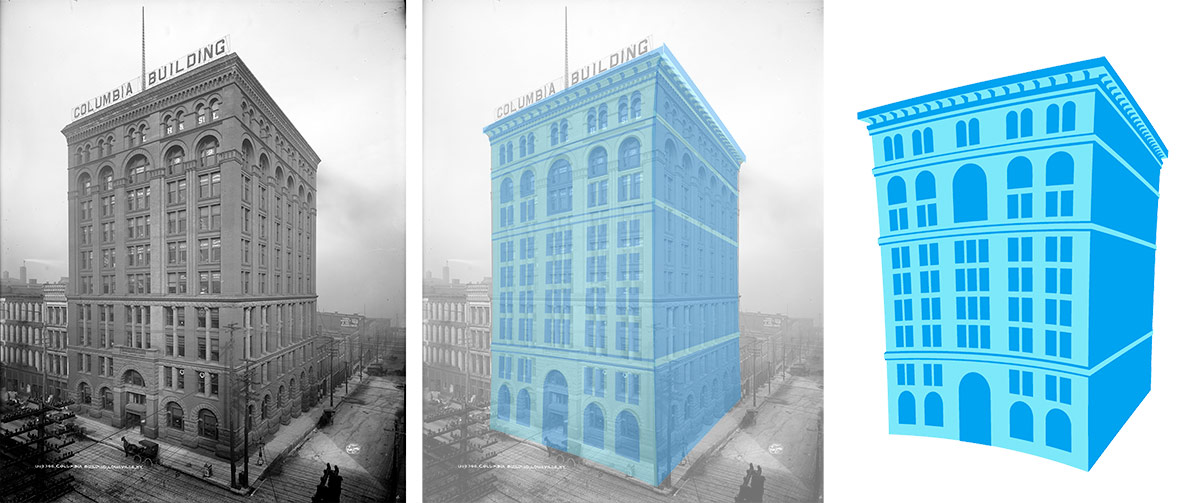
Vawter said the logo’s end result was designed to match the typeface and be appealing on its own. “We looked at a lot of vintage photography and drew inspiration from various places,” Vawter said. “There was no overt intent to pay homage to the Columbia Building although we certainly agree it was a handsome structure.”
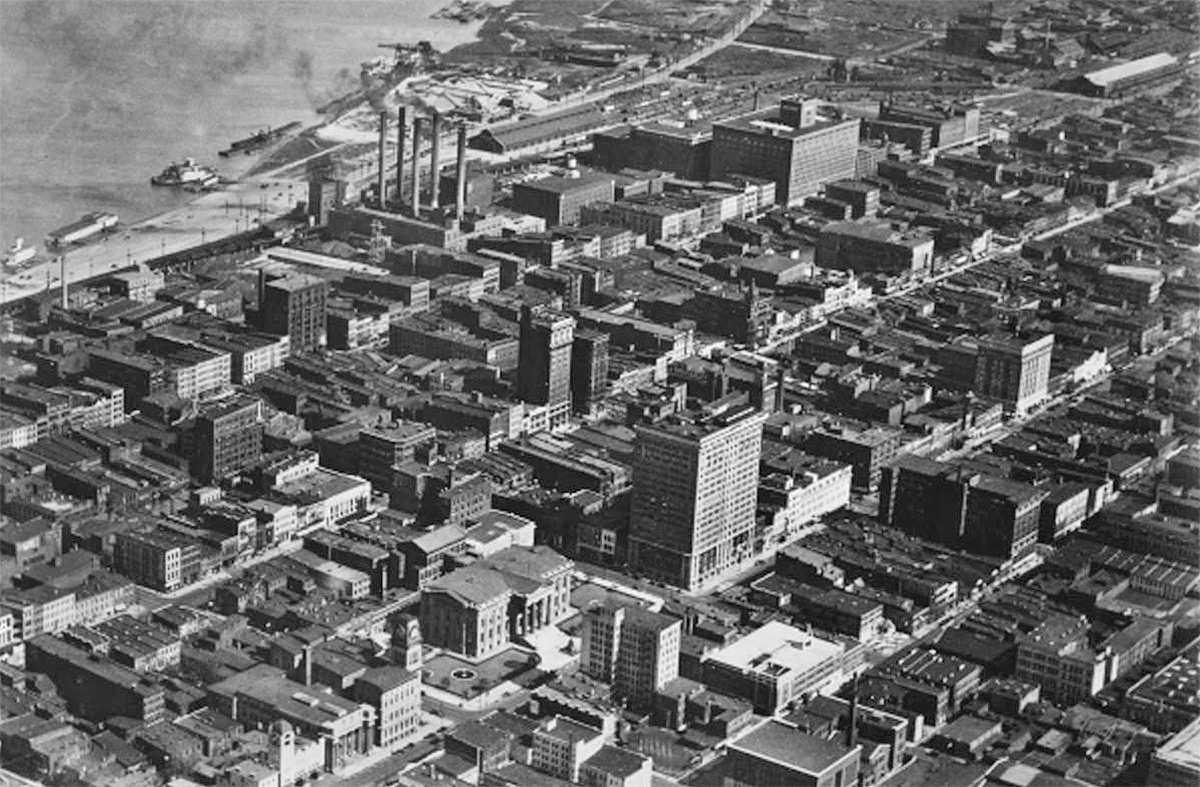
While not intentional, we’re thrilled by the resemblance. The Columbia Building was one of the grandest buildings ever built along Main Street—or in all of Louisville. Today, only its red granite cornerstone sits on the corner of Fourth and Main Streets in front of the BB&T building that replaced it, bearing a plaque describing unsympathetically its demolition.
The ten-story Columbia Building was built in 1890 as the Commercial Club Building, a short-lived title, and towered over its low neighbors at a height of 162 feet. A prominent St. Louis publisher died in the building, plunging 9 floors in its elevator, resulting in a lawsuit for $25,000, which may have contributed to the building’s sale three years after it was opened.
Architecture firm Curtin & Campbell designed the structure, which stood as the city’s tallest for a decade. According to the Filson Historical Society’s Sarah-Jane Poindexter, the building was designed “as a Richardsonian Romanesque high-rise in the First Chicago School style, featuring rounded archways in red sandstone and pressed red brick on the upper levels.”
The Columbia Building was “the first of the many Romanesque style commercial buildings that came to characterize the downtown Louisville of the early 20th Century,” according to the Old Louisville Guide. “Unbelievably, the red brick over red sandstone building was criticized early on for its severity and lack of ornamentation.” The website added that the building once carried the title as “tallest building in the Western Hemisphere south of the Ohio River,” built just five years after the the world’s first skyscraper, the Home Insurance Building in Chicago.
Poindexter continued:
In 1964, the City Urban Renewal Agency bought the building, along with other surrounding properties, with the intent to revitalize the downtown Louisville riverfront. The Columbia Building was razed two years later and in 1972 replaced by a twenty-four-story Modernist International style high-rise, known today as the BB&T Building. Currently a stone from the original foundation remains in front of the new building, commemorating Louisville’s first skyscraper.
Today, however, spirits are as high as ever on city’s main thoroughfare. The Main Street Association covers an area from Home of the Innocents to the east and 15th Street to the west, spreading out to include Washington Street and Market Street.
Miller is excited about the growth Main Street is currently experiencing, and she hopes to build on that momentum with regular events that keep people connected. The association just wrapped up its 40-day anniversary celebration on October 9 with the Progressive Dinner and Auction, an annual event.
The association hopes to increase promotion of its members and the groups breathing life into the street. “We’ve long focused on Main Street’s architecture and the buildings themselves,” Miller said. “Going forward, we hope to focus more on what’s going on inside those buildings and the people and economic impact of their activity.”
Doe-Anderson itself has long Main Street roots. The firm was founded on Main Street in 1915 at the also-demolished Keller Building. Later, the firm moved its offices to the Columbia Building. A few moves later, they’re back on Main at 620 West Main Street. The agency has been celebrating its centennial this year.
Miller said the Main Street Association is still a small group that relies on funding from its members. She took on the part time director role in September 2014, officially taking the reins from 14 year association veteran Carol Hensley. Miller was on the nonprofit’s board for the previous five years.
The association is based in the Normandie Building around the corner on Seventh Street. Adding to the already storied history of the street, Miller said her office was the set for Bill Murray’s apartment in the ’80s comedy movie Stripes.
[Photo credits: Images noted as courtesy UL Photo Archives: Reference, Reference, Reference, Reference, Reference, Reference, Reference, Reference, Reference, Reference. Library of Congress: Reference. Kentucky Digital Library: Reference. Old Louisville Guide: Reference.]


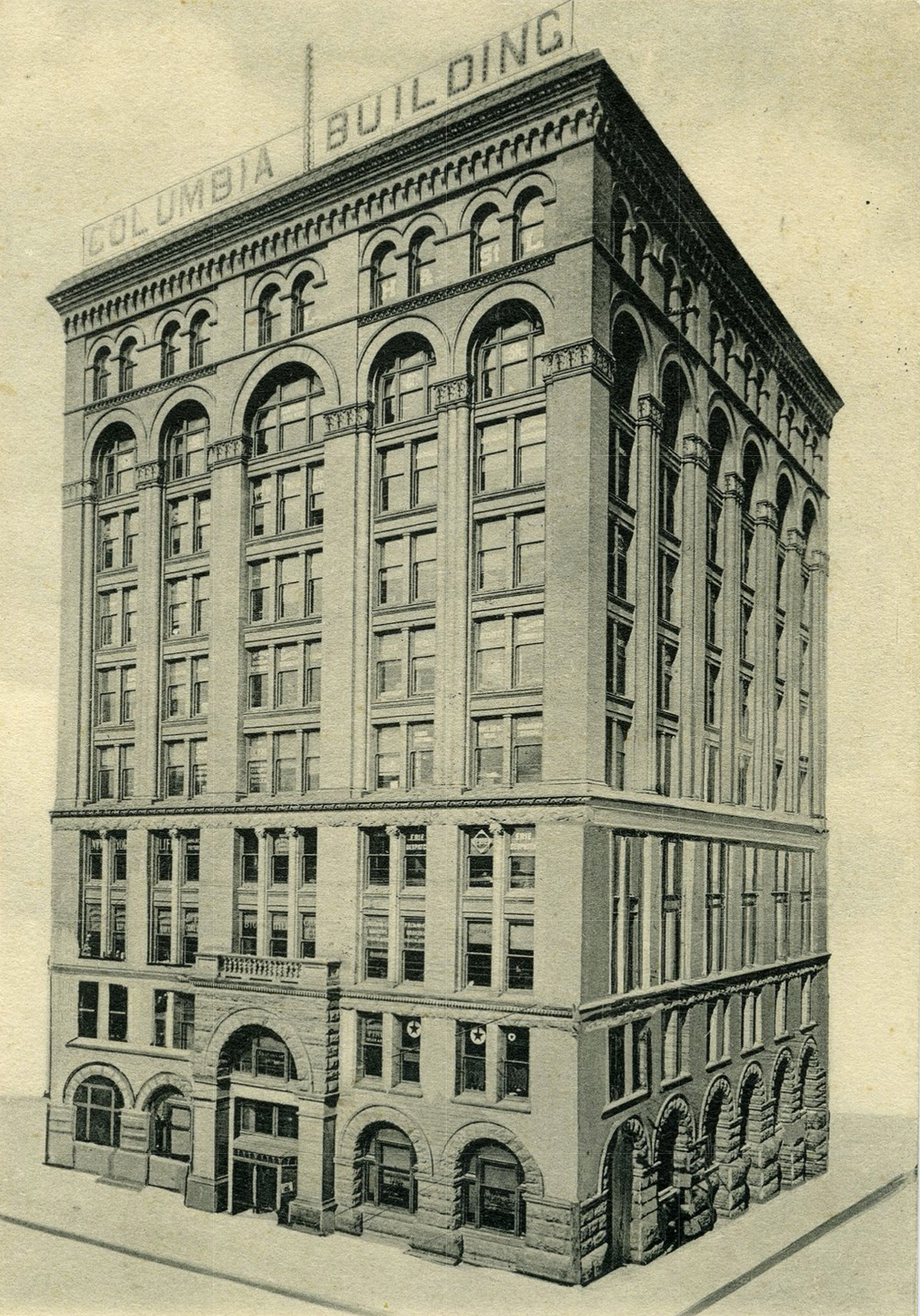
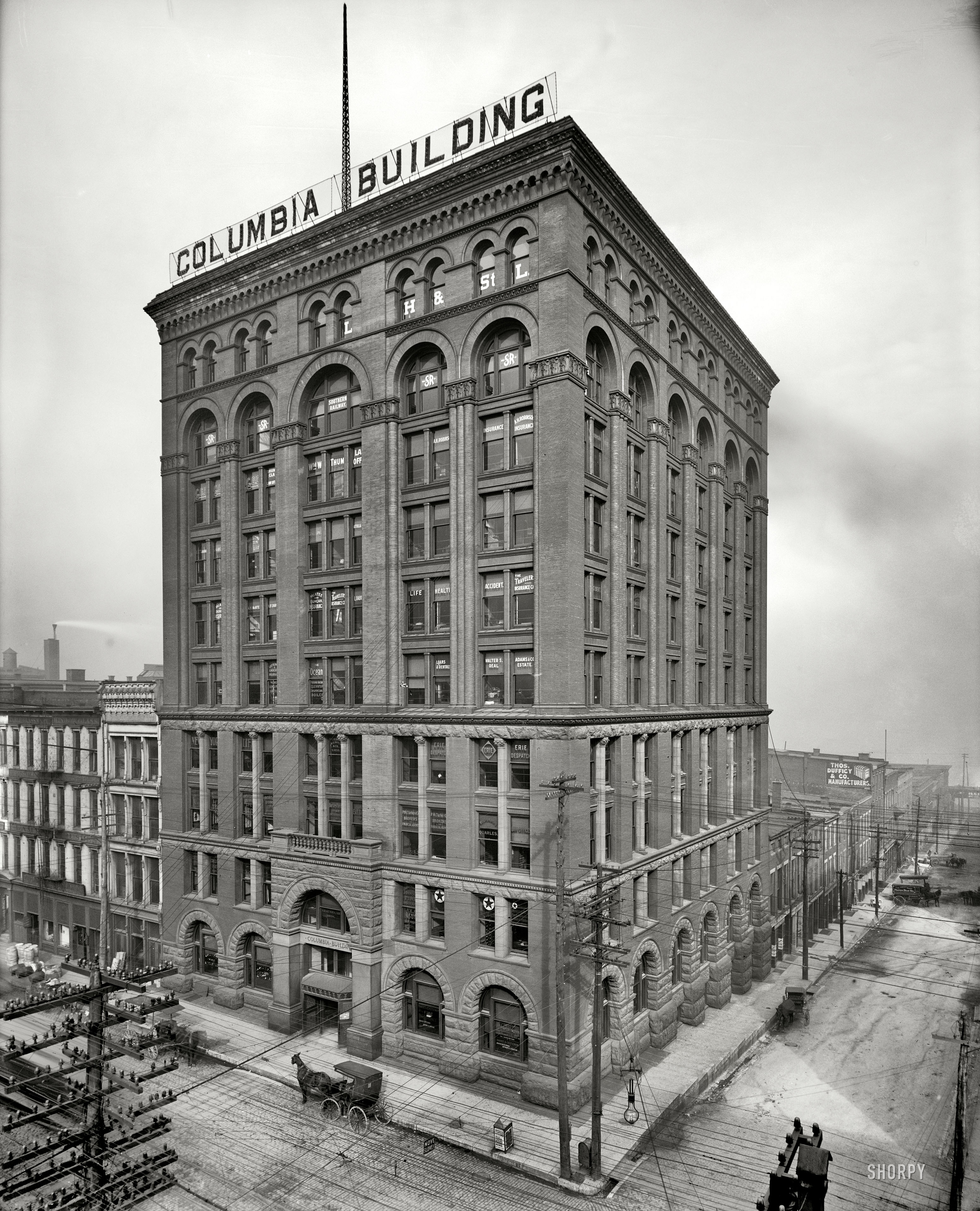
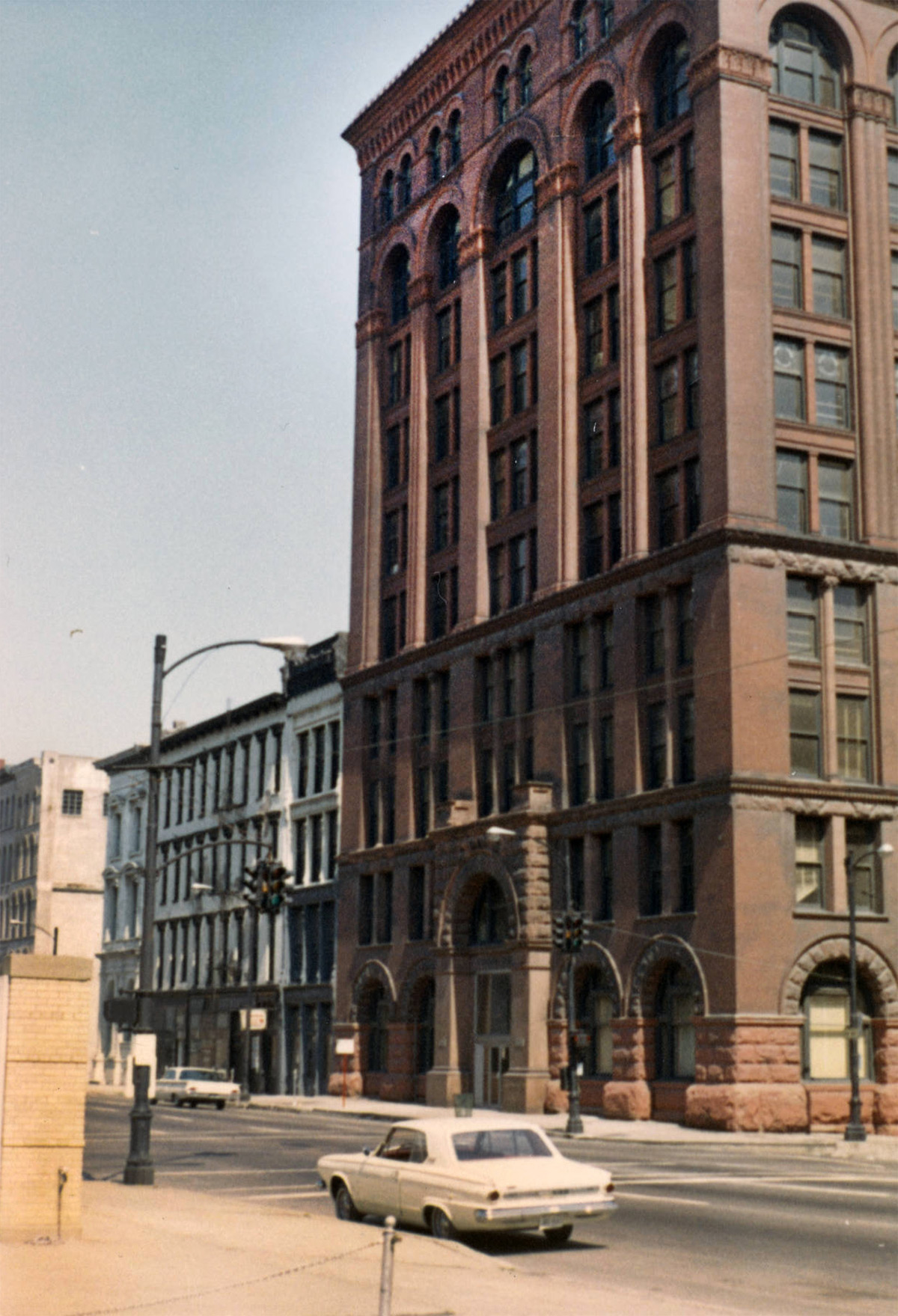
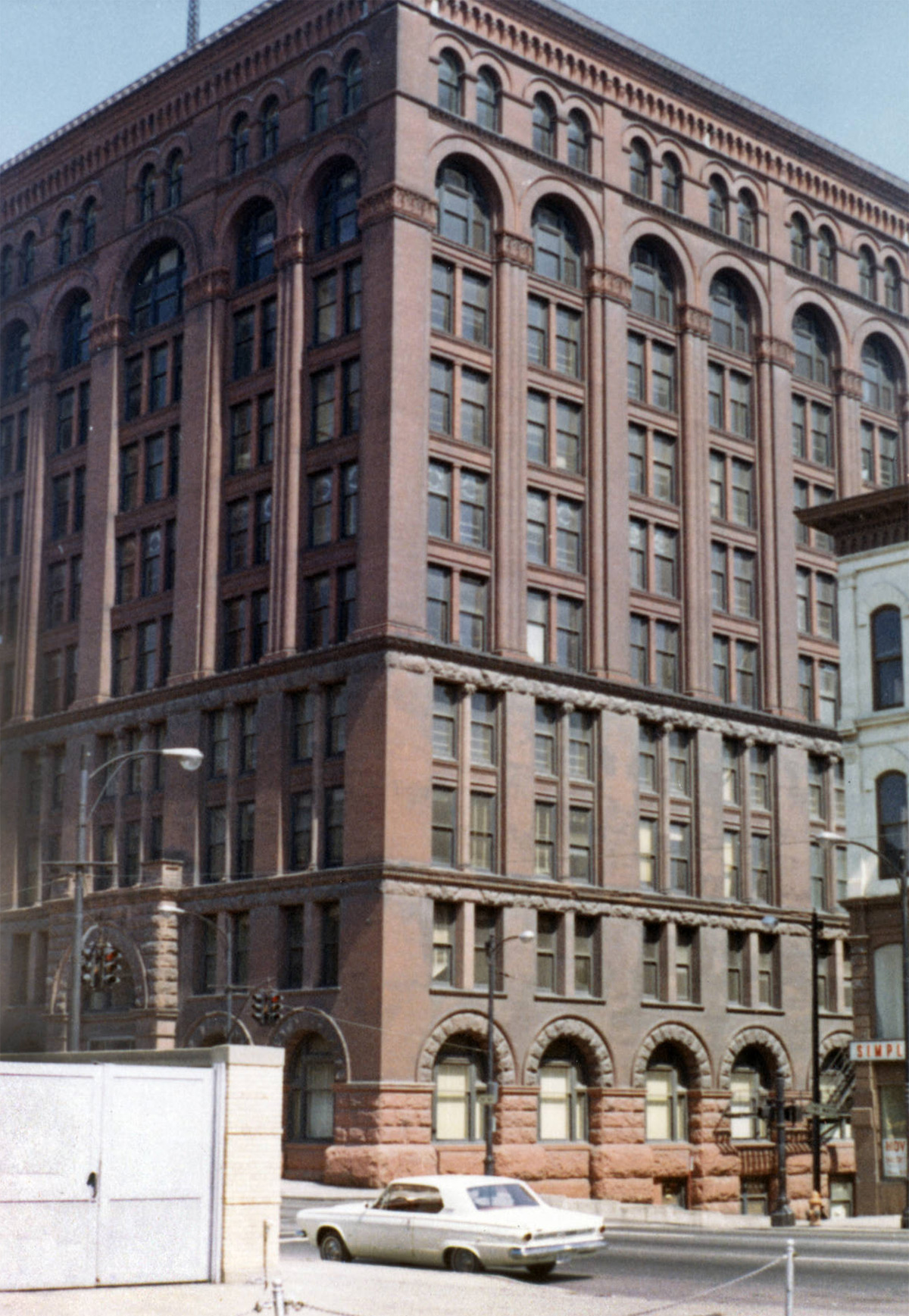
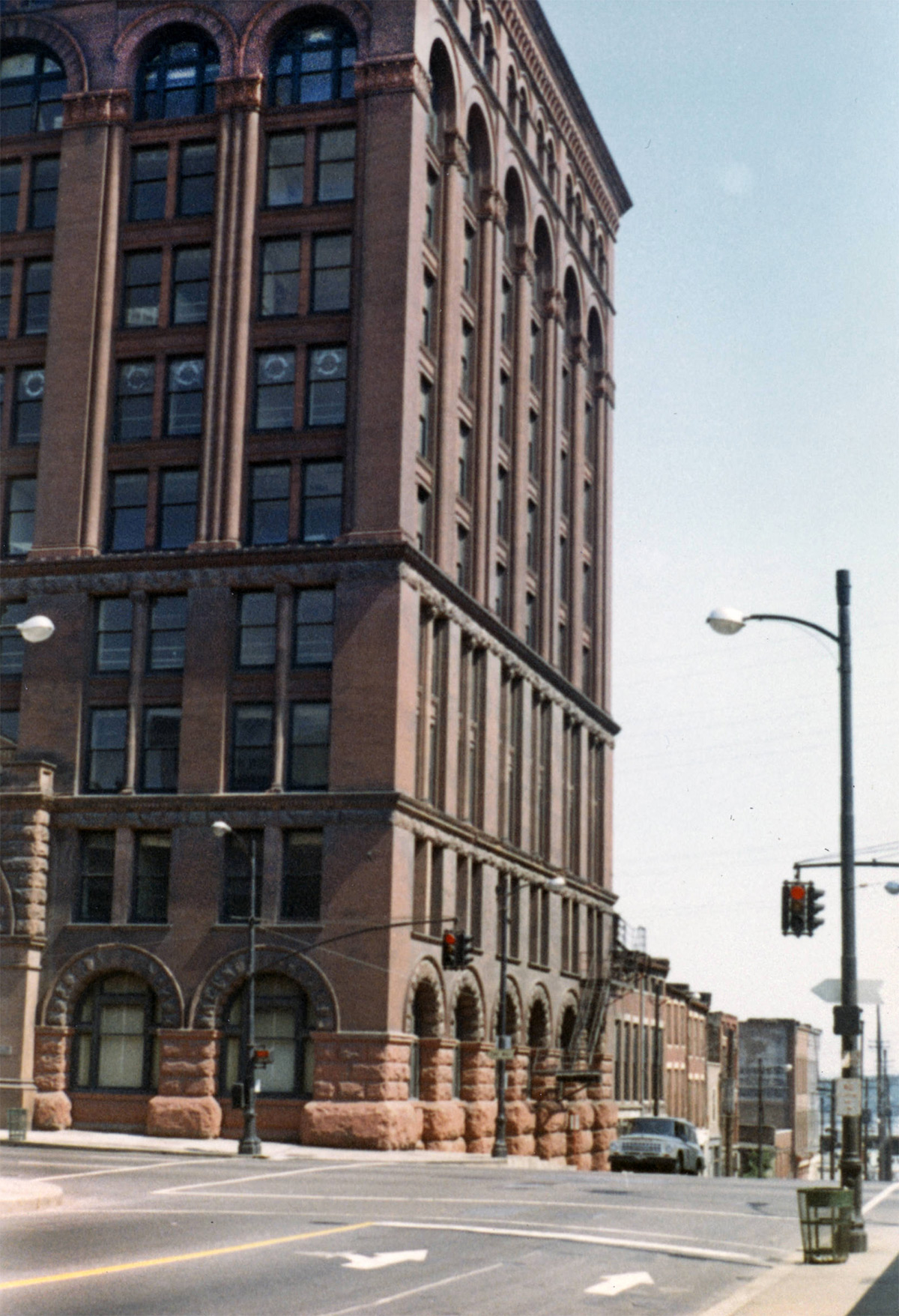
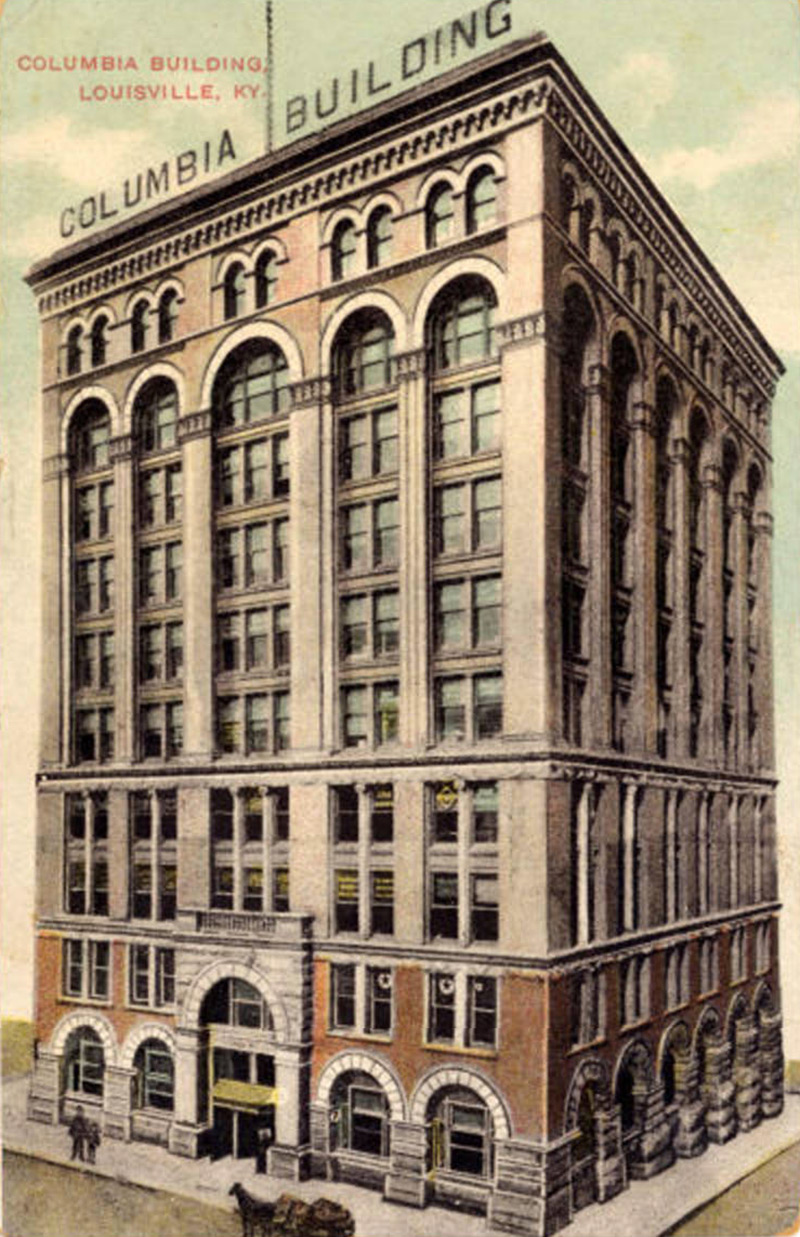
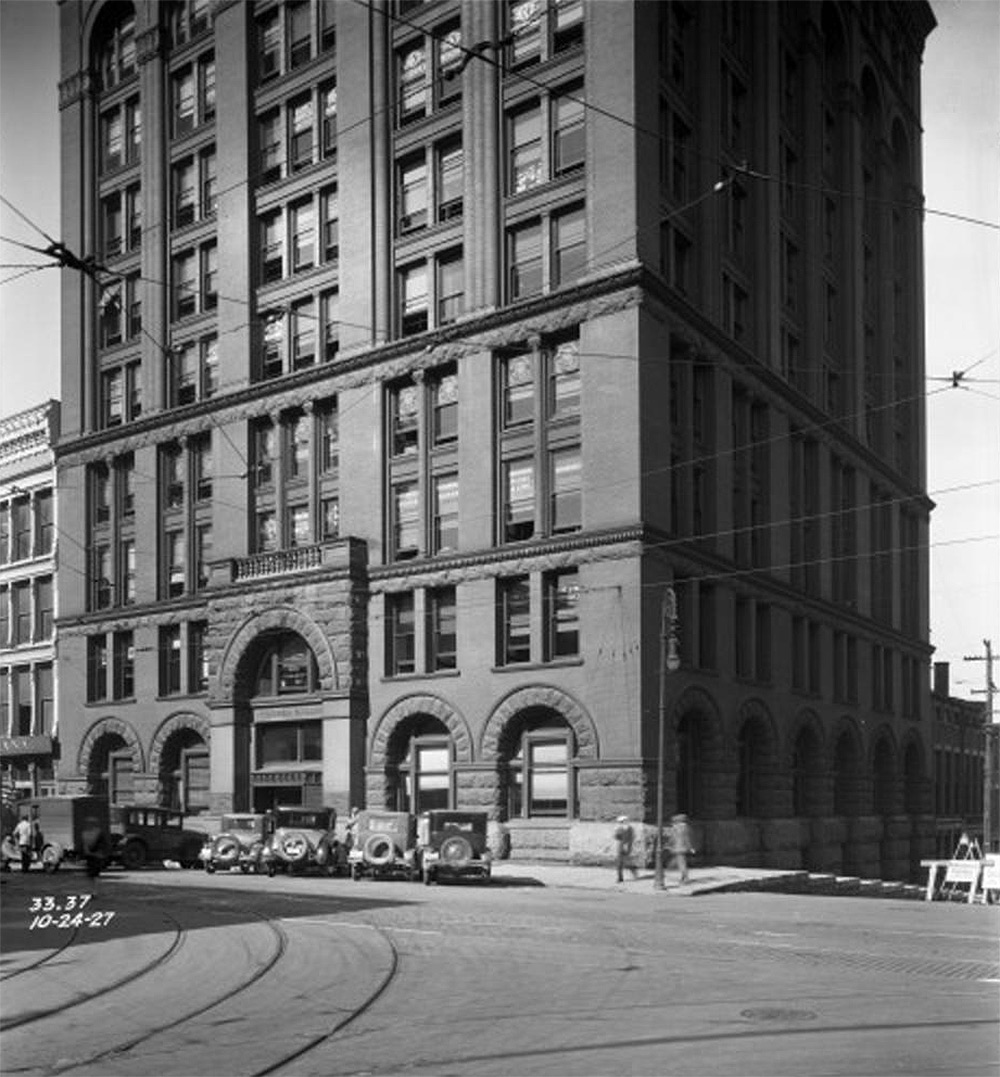
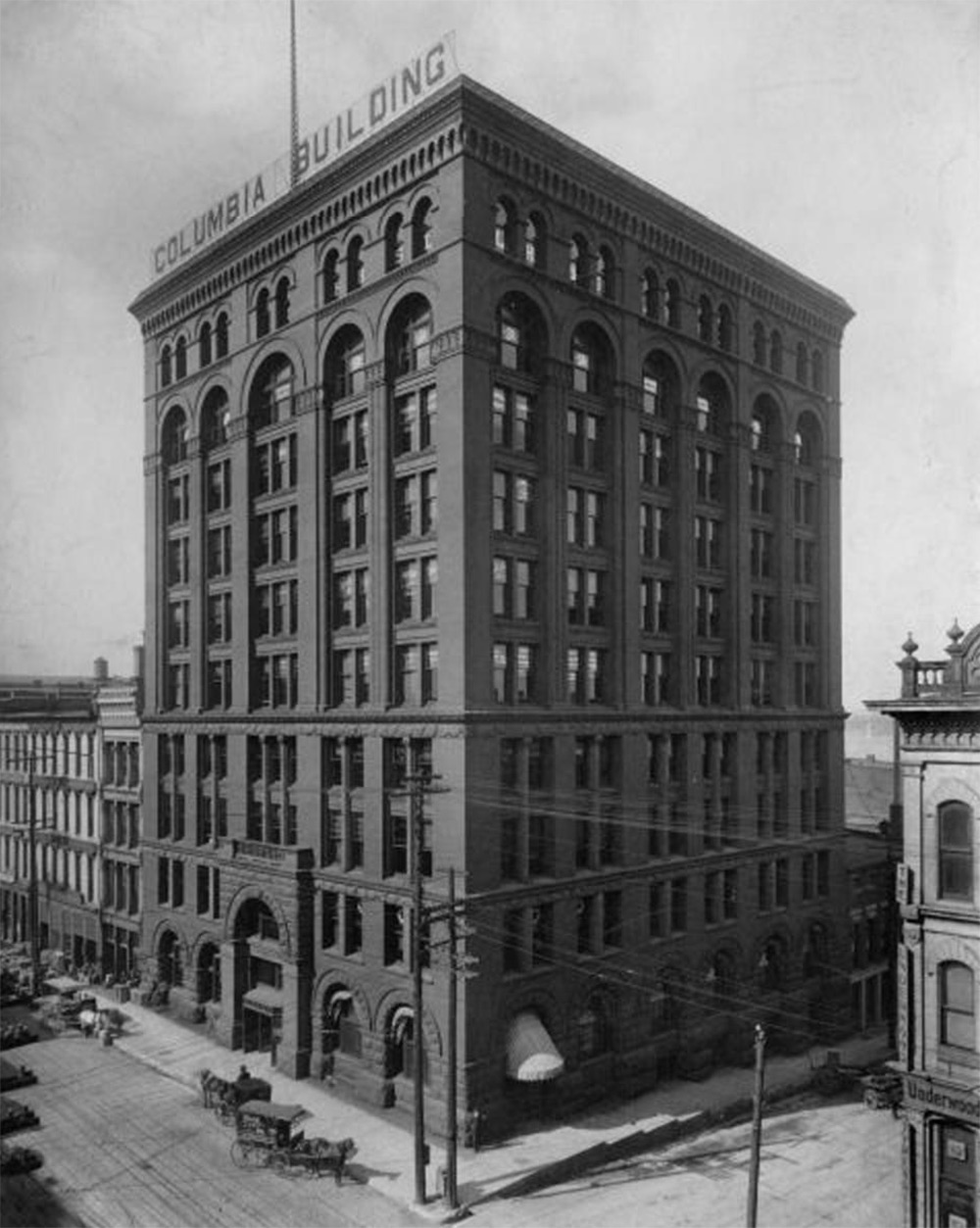
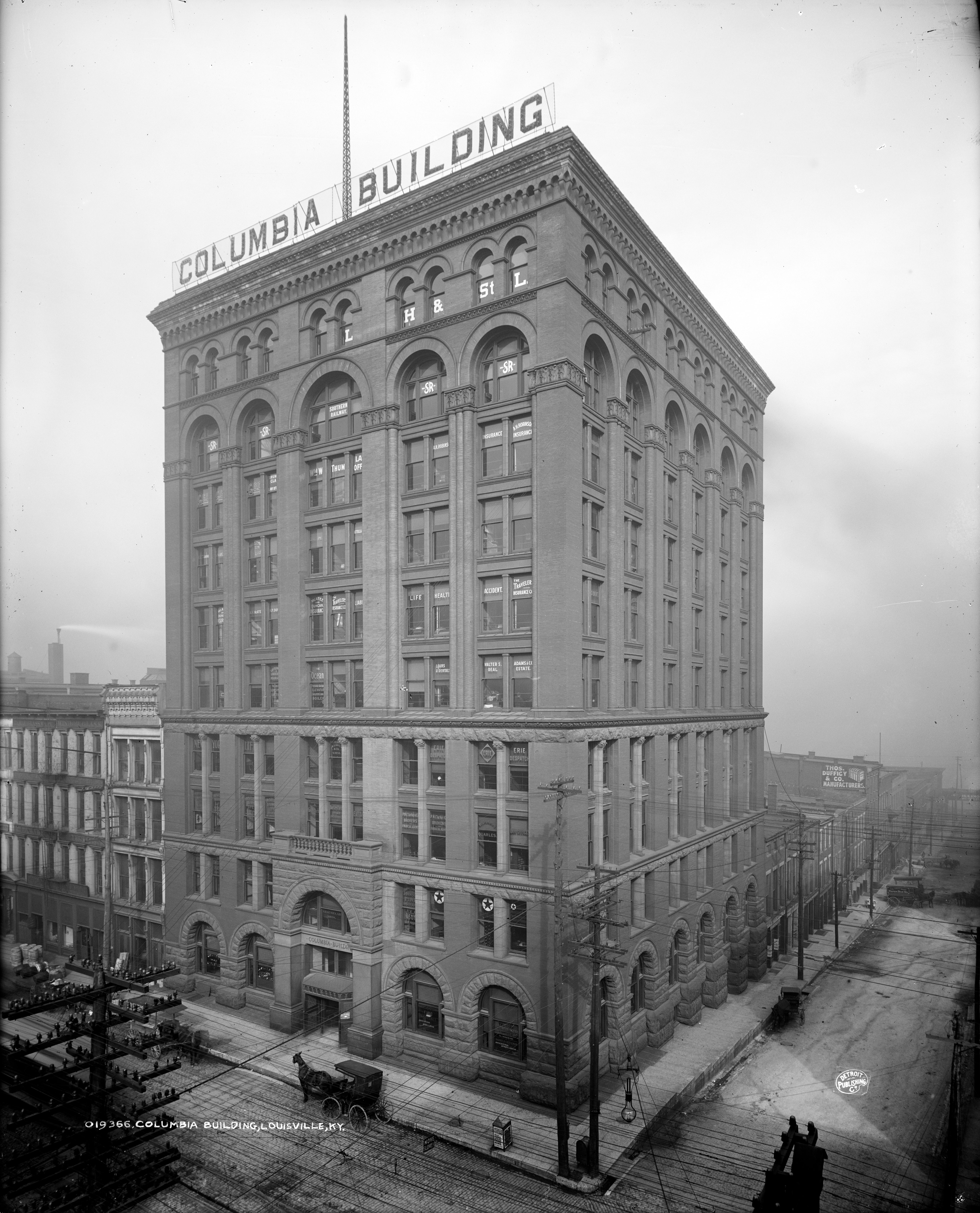
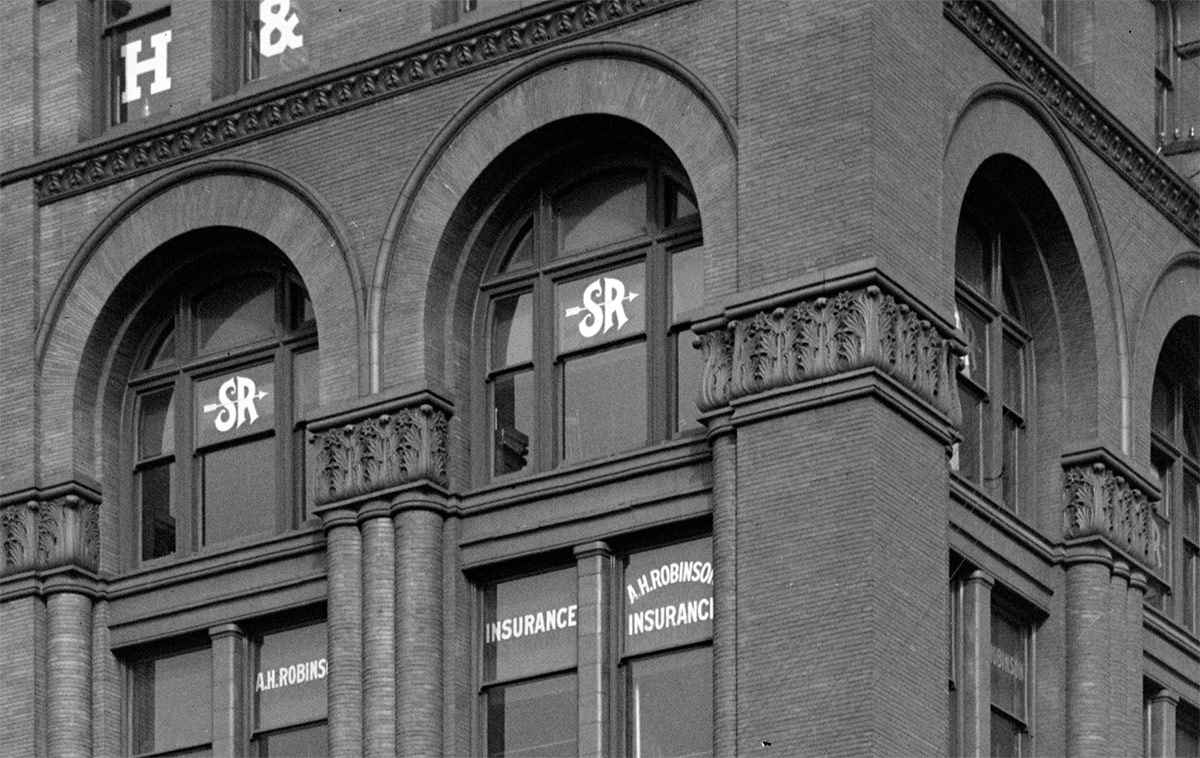

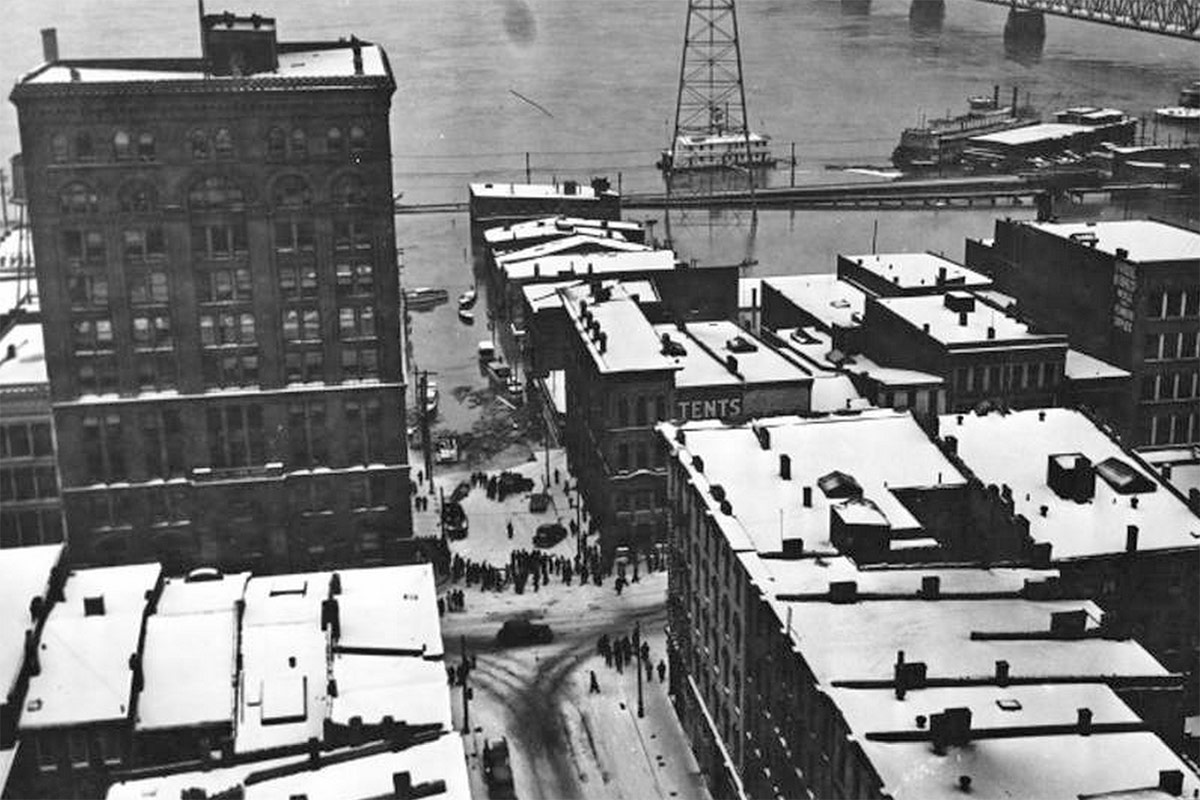
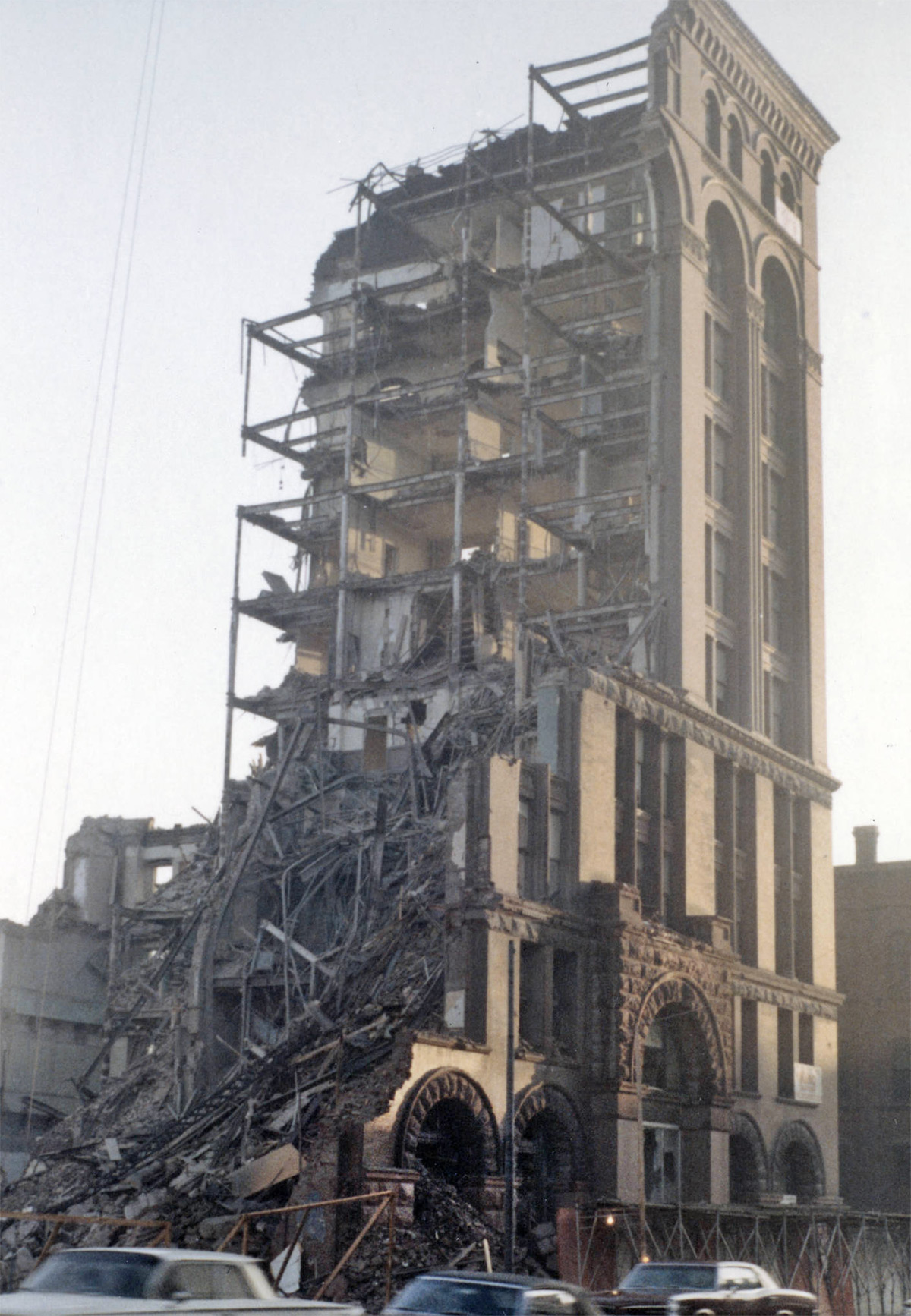
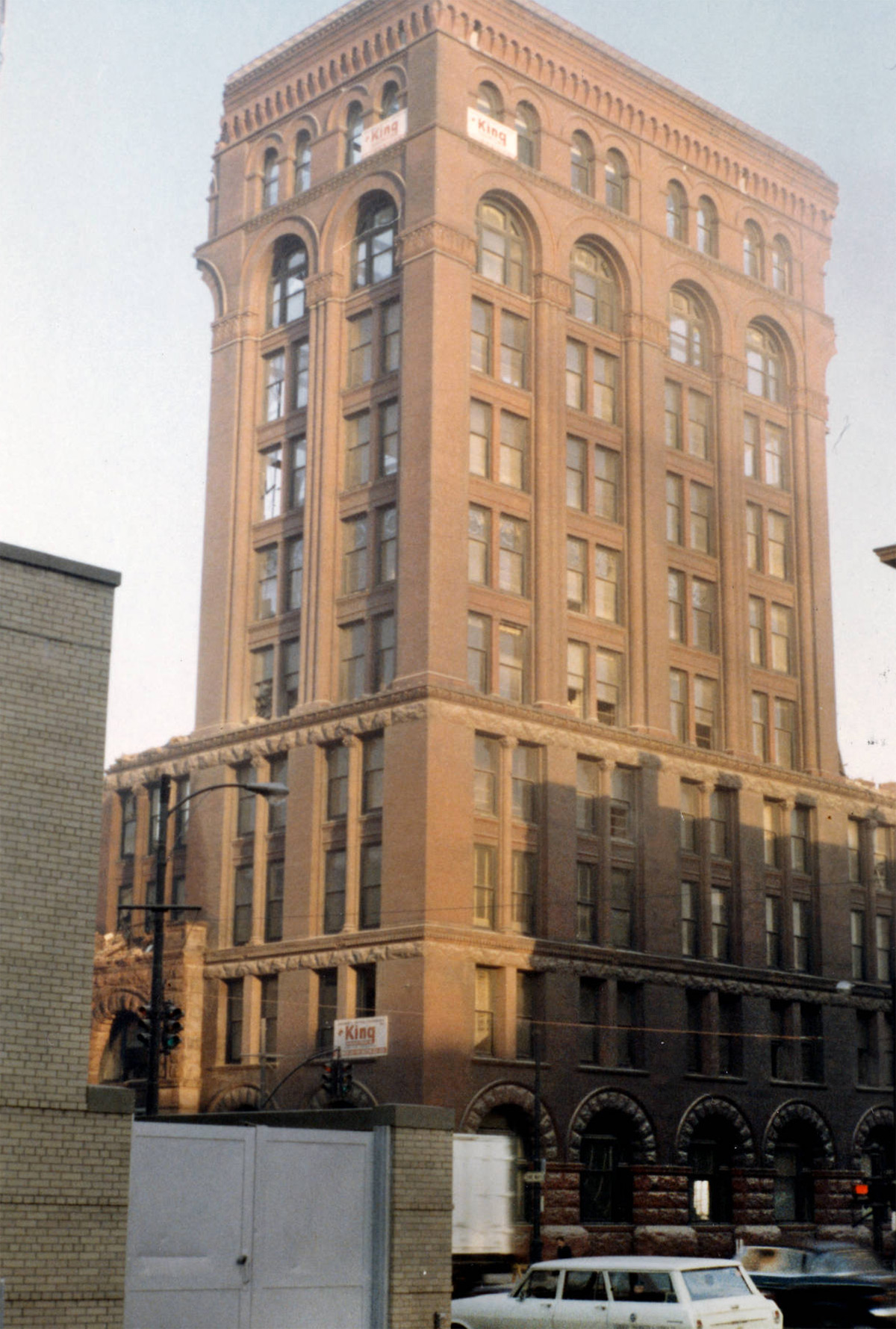
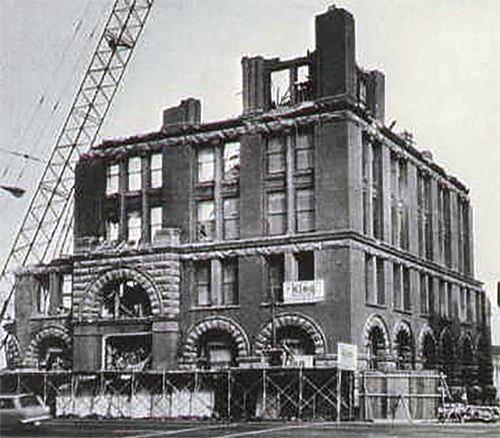

Lost Louisville …… Doe is in an old new building themselves ……. Or what we used to do well.
And yeah. This is more than a nod to the Columbia.
Now show us Sixth and Main, Henry Whitestone. Lost Louisville.
Here’s 6th & Main’s missing tooth: http://brokensidewalk.com/2010/lost-louisville-sixth-mains-hamilton-bank-building/
Architect Mason Maury’s Kenyon Bldg of 1886 certainly predates Columbia as an earlier example of both First Chicago School and Romanesque stylings, though Columbia may be more of pure form. I would not privilege the Louisville Guide as a reference on matters of historical architecture.
Where is 2nd Street bridge in the aerial photo above? Huh?
@Neal: The Second Street Bridge opened in 1929, so that aerial view likely dates to the early ’20s before construction began. The Belknap Warehouse where Humana is now and visible in the photo was built in 1921.